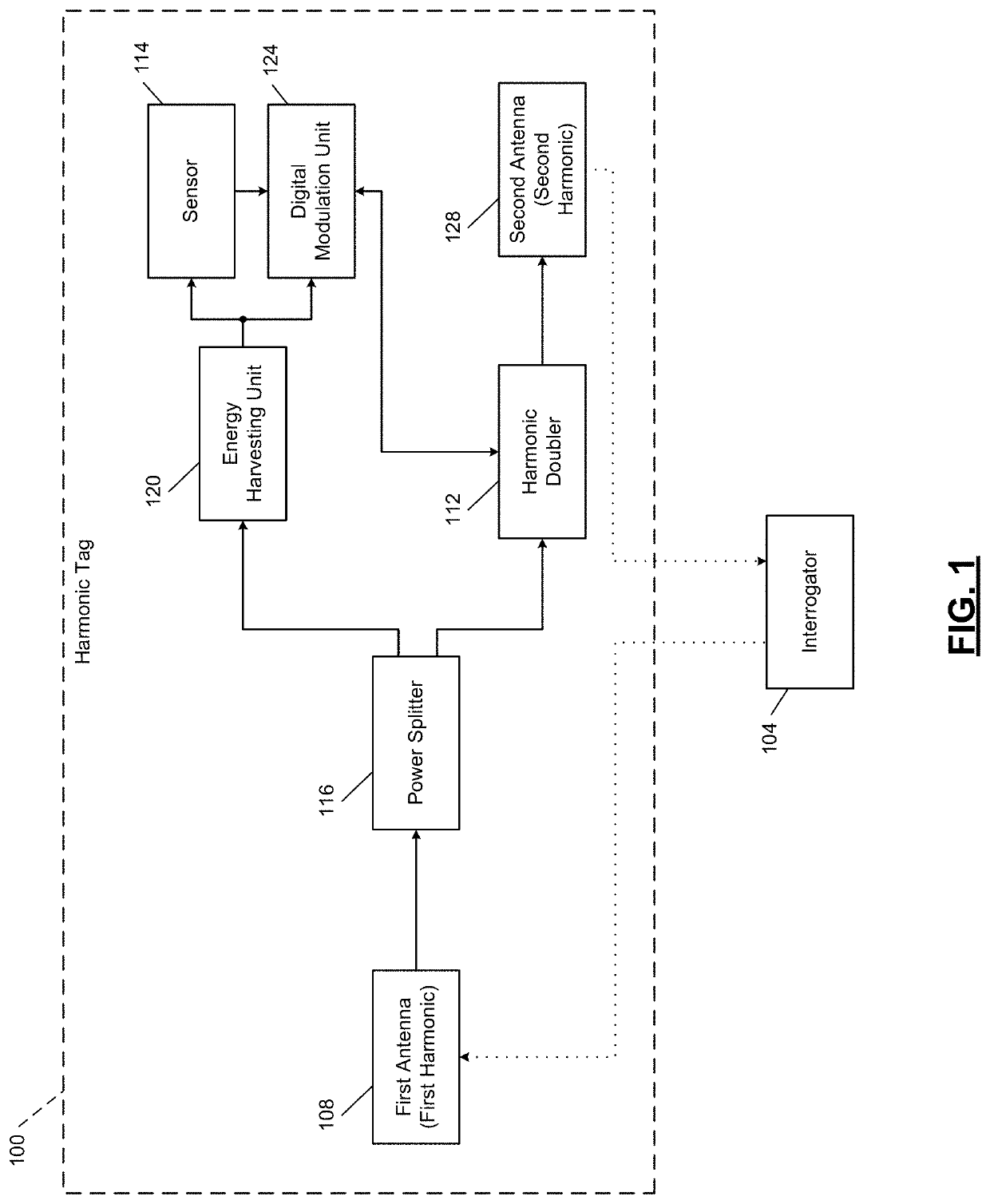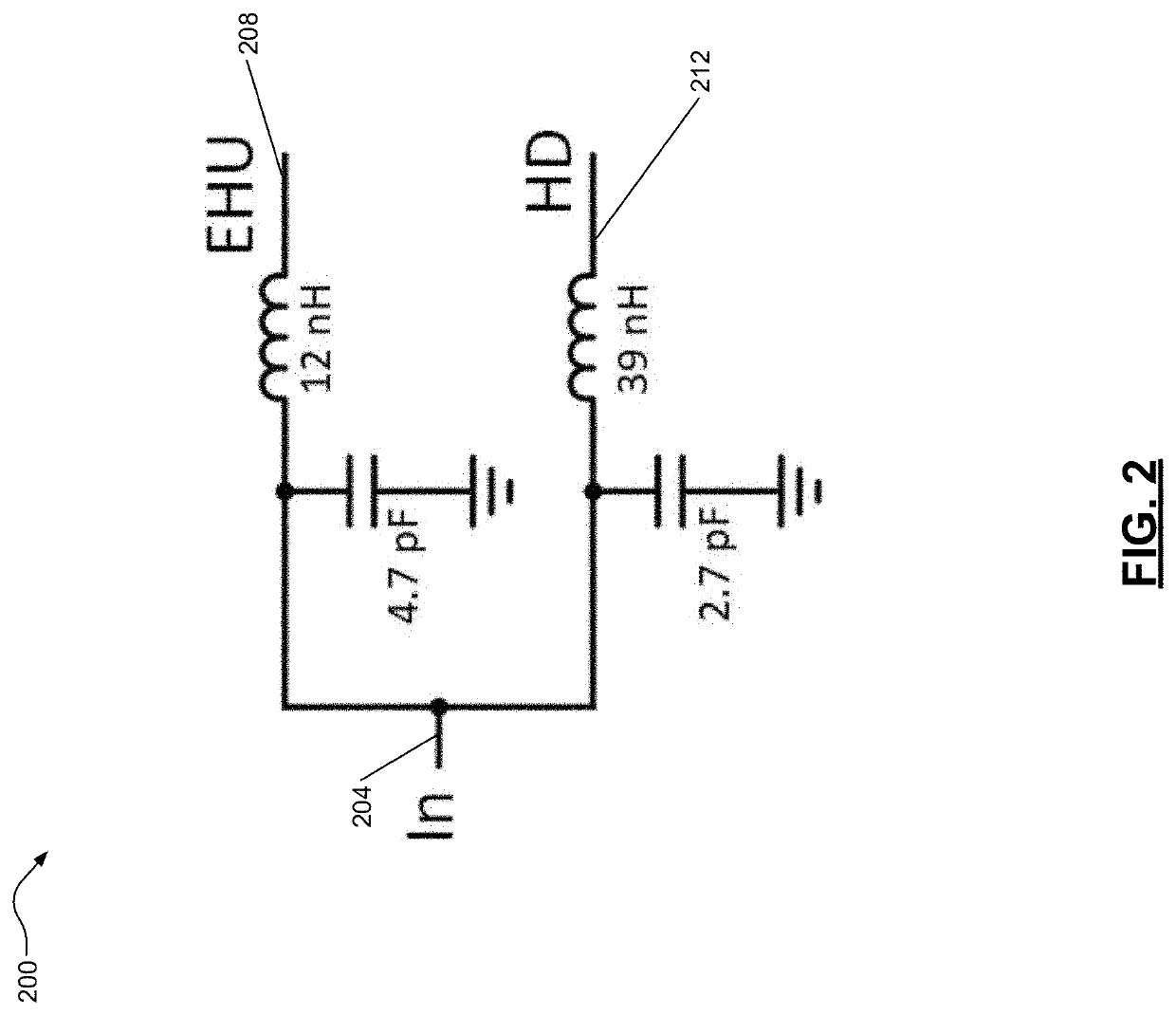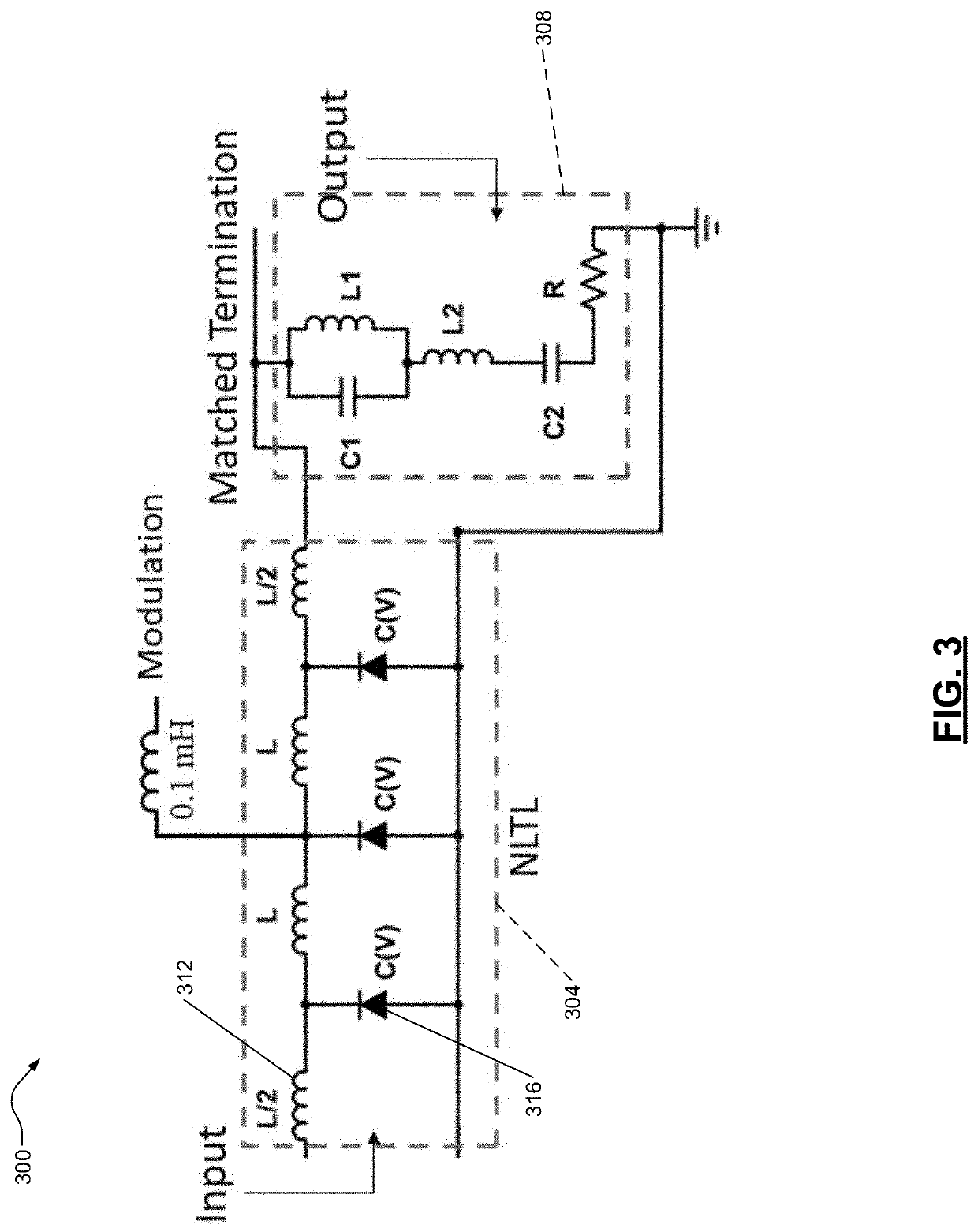Harmonic RFID Tag-Reader System For Long Range Sensing Identification And Security
- Summary
- Abstract
- Description
- Claims
- Application Information
AI Technical Summary
Benefits of technology
Problems solved by technology
Method used
Image
Examples
Embodiment Construction
[0021]Example embodiments will now be described more fully with reference to the accompanying drawings.
[0022]A passive harmonic radio frequency identification (RFID) tag integrated with a remote sensor is configured to transmit sensor data as well as identification information, for example, a tag identifier (ID). For remote sensing, automation, and control, multiple sensors are being integrated into one device. To distinguish between different sensors, there is a need to integrate the identifier (ID) / IP address in the sensors. RFID systems are popular for separating different tags by IP address. A further layer is added to the RFID system by making the RFID system capable of sensing. In the present disclosure, a radio frequency (RF) system is proposed, which can communicate the sensing data from a sensor along with the embedded tag ID by tailoring the harmonic generation of a fundamental frequency in the tag.
[0023]To improve signal to noise ratio (SNR) of a received signal due to en...
PUM
 Login to View More
Login to View More Abstract
Description
Claims
Application Information
 Login to View More
Login to View More - R&D
- Intellectual Property
- Life Sciences
- Materials
- Tech Scout
- Unparalleled Data Quality
- Higher Quality Content
- 60% Fewer Hallucinations
Browse by: Latest US Patents, China's latest patents, Technical Efficacy Thesaurus, Application Domain, Technology Topic, Popular Technical Reports.
© 2025 PatSnap. All rights reserved.Legal|Privacy policy|Modern Slavery Act Transparency Statement|Sitemap|About US| Contact US: help@patsnap.com



